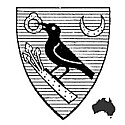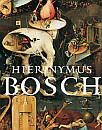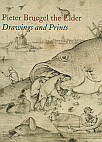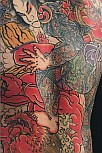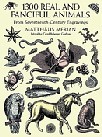
Description & notes: Toucan on the branch of a tree. Text describes a toucan with a red body and white throat. Scientific name: Ramphastos tucanus.
Illustration by Veremondo Rossi

Description & notes: Vulture or buzzard with skeletons of its prey about its feet. Text describes the vultures of the area around Acapulco; this is perhaps the turkey vulture or Cathartes aura.
Illustration by Veremondo Rossi

Description & notes: Penguin with detail of feather and head profile. Perhaps the Humboldt penguin which is native to Peru and Chile. Scientific name: Spheniscus Humboldti.
Illustration by Giuseppe Maria Terreni

Description & notes: Male Arctic tern. Scientific name: Sterna paradisaea.
Illustration by Antonio Gregori

Description & notes: Brown pelican stands on coast. Text describes pelican found in Jamaica. Scientific name: Pelecanus occidentalis.
Illustration by Violente Vanni

Description & notes: Heron from Hudson's Bay, probably a great blue heron. The great blue heron (Ardea herodias) range in Canada.
Illustration by Andrea Scacciati

Description & notes: Hummingbirds. Female sits on a nest with two eggs, while the male bird flies toward her. Also includes a butterfly.
Illustration by Veremondo Rossi

Description & notes: Little blue heron standing by the side of a pond. Also includes a fish. Identified as a gray heron (Ardea cinerea); here most likely a little blue heron (Egretta caerulea), a North American bird.
Illustration by Andrea Scacciati

Description & notes: Red-billed tropicbird and female Arctic tern. Includes detail of the two birds' heads. Scientific name of the red-billed tropicbird: Phaethon aethereus; scientific name of the Arctic tern: Sterna paradisaea.
Illustration by Ferdinando Gregori

Description & notes: Hummingbirds. Includes branches they are perched on and an egg. Text describes hummingbirds found in Jamaica. Scientific name: Archilochus colubris [?].
Illustration by Veremondo Rossi

Description & notes: Frigate bird, paille-en-queue or tropicbird, pelican, flamingo and Aves or Bird Island. Text describes birds of the Caribbean islands. Frigatebird: (perhaps) Fregata magnificens, paille-en-queue or white-tailed tropicbird: Phaeton lepturrus, pelican: (perhaps) Pelecanus occidentalis, and flamingo: Phoenicopteridae ruber ruber (or the Caribbean flamingo). Image derived from Jean Baptiste Labat, 'Nouveau Voyages', Paris, 1722.
Illustrator not named

Description & notes: View of a sulfur mountain or volcano with two black men. Also includes a crow or raven and two dogs. Text discusses the mountain described by Labat and found in Guadeloupe.
Illustrated by Giuseppe Maria Terreni
See the first comment below for proposed species identification corrections.}
The full title of the original 3-volume series, published in London in 1762, for J Millar and J&R Tonson, is:
'The American Gazetteer : containing a distinct account of all the parts of the new world, their situation, climate, soil, produce, former and present condition, commodities, manufactures and commerce; together with an accurate account of the cities, towns, ports, bays, rivers, lakes, mountains, passes and fortifications; the whole intended to exhibit the present state of things in that part of the globe, and the views and interests of the several powers who have possessions in America'.The series is a geographical dictionary or perhaps, more correctly, an encylopaedia of the Americas and I recommend reading some sample paragraphs or pages: the language is wonderful, if dated.
In 1763 the books were translated into Italian and published in Livorno (by Marco Coltellini) as the first complete geographical description of the New World. More than seventy etched engravings of wildlife were added to the few maps that had been published in the first edition. It is the quality of some of the illustrations (the buzzard, pelican and toucan plates above, for instance) that mark this edition as a work of particular distinction.
I noted copies of 'Il Gazzettiere Americano' selling for £2500 this year, but didn't see any sales of the original edition in English in the recent past. I get the feeling that the Italian publication has a better, or more significant, reputation because of the greater range and quality of illustrations.
- The images above from 'Ill Gazzettiere Americano' come from the Archive of Early American History at JCB Library at Brown University, which has about a third of the series' illustration plates available. [click through on the images above to see good-sized versions, but go to the source site to see the birds - and more - in very high resolution zooming frames]
- You can view the whole text easily -- in English, including the long ſ ^ -- via the Internet Archive. to find out that Quito natives' bodies have such good "juices" that they're able to ward off venereal disease; among other things.
- Vol. 1 of 'Il Gazzettiere Americano' is also available via the Internet Archive.
- Sotheby's | Christie's | Christie's
- There are various versions of 'The American Gazzetteer' at Amazon.












